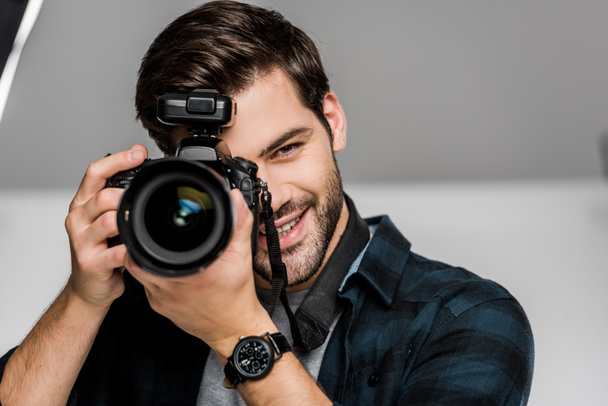Introduction
Welcome to the crossroads of creativity, the intersection where entertainment, lifestyle, music, and fashion converge to create a vibrant tapestry of cultural expression. In this article, we embark on a journey through the pulsating rhythms of music, the captivating allure of fashion, the dynamic narratives of entertainment, and the ever-evolving landscape of lifestyle trends. As we delve into the intricacies of these interconnected realms, we uncover the threads that bind them together, shaping our individual identities and collective consciousness. From the red carpet to the runway, from the dance floor to the digital screen, join us as we explore the unique synergy of Entertainment, Lifestyle, Music, and Fashion, and discover the profound impact they have on our lives and society as a whole.
Understanding the Interplay
In the contemporary cultural landscape, the lines between entertainment, lifestyle, music, and fashion have blurred, creating a rich tapestry of interconnected industries that shape our perceptions and experiences. Understanding the interplay between these realms is crucial for unraveling the complexities of modern culture and identifying the forces that drive societal trends. This article delves into the dynamic relationship between entertainment, lifestyle, music, and fashion, exploring how they intersect and influence each other in profound ways.
The Convergence of Industries:
Entertainment, lifestyle, music, and fashion are no longer distinct entities but rather interlocking facets of a broader cultural ecosystem. Gone are the days when films existed solely to entertain or fashion was purely functional. Today, these industries intersect and collaborate, creating synergies that redefine the boundaries of creativity and expression.
Entertainment serves as a powerful platform for storytelling, whether through films, television, or digital media. It not only reflects societal values but also has the ability to shape them. Similarly, lifestyle encompasses the attitudes, habits, and preferences that define us, often intersecting with entertainment through the rise of lifestyle influencers who blur the lines between personal expression and branded content.
Music, with its universal appeal, transcends language and cultural barriers, serving as a potent force for connection and expression. Musicians are not only artists but also influencers, shaping trends and attitudes through their lyrics, personas, and collaborations. Fashion, meanwhile, is a visual language that speaks volumes about our identity and aspirations. From the runway to the streets, fashion reflects and influences cultural movements, often drawing inspiration from music and entertainment.
Exploring the Intersections:
At the heart of the interplay between entertainment, lifestyle, music, and fashion lies a series of dynamic intersections where trends are born and narratives are crafted. Consider, for example, the phenomenon of celebrity culture, where entertainers become style icons and influencers, shaping fashion trends and consumer behavior. From red carpet appearances to social media endorsements, celebrities wield immense influence over our perceptions of beauty, style, and success.
Likewise, music and fashion have a long history of collaboration, with musicians often serving as ambassadors for fashion brands or launching their own clothing lines. The music industry’s influence on fashion is particularly evident in subcultures like hip-hop and punk, where artists use clothing as a form of self-expression and cultural identity.
Furthermore, lifestyle trends often emerge from the intersection of entertainment, music, and fashion. Consider the rise of athleisure, a fashion trend born from the fusion of activewear and street style, popularized by celebrities and influencers alike. This trend reflects broader cultural shifts towards health, wellness, and comfort, influencing not only what we wear but also how we live and perceive ourselves.
The Impact on Society:
The interplay between entertainment, lifestyle, music, and fashion extends beyond mere trends and aesthetics; it shapes our collective consciousness and influences societal norms and values. From body image ideals perpetuated by the entertainment industry to the promotion of sustainability and diversity in fashion, these industries have a profound impact on how we perceive ourselves and others.
Moreover, the interconnection of these realms amplifies cultural movements and social causes, providing platforms for marginalized voices and driving meaningful change. Whether it’s through music festivals raising awareness for environmental conservation or fashion brands advocating for inclusivity and representation, the power of entertainment, lifestyle, music, and fashion to effect social change cannot be overstated.
Exploring Entertainment
Entertainment, often perceived as mere escapism, is a profound reflection of human creativity, emotion, and expression. Beyond its surface allure lies a complex tapestry of narratives, artistry, and cultural significance waiting to be unraveled. This article embarks on a journey to explore the depths of entertainment, delving into its multifaceted realm to unveil the richness it holds within.
The Essence of Entertainment:
At its core, entertainment is about storytelling—captivating narratives that transport us to distant realms, evoke deep emotions, and provoke thought. Whether through the silver screen, the stage, or the digital realm, entertainment has the power to inspire, educate, and illuminate the human experience.
From blockbuster films that transport us to fantastical worlds to intimate theater productions that delve into the depths of the human psyche, entertainment encompasses a vast array of mediums and genres. It caters to diverse tastes and preferences, offering something for everyone, from pulse-pounding action to soul-stirring drama, from uproarious comedy to introspective art-house fare.
The Evolution of Entertainment:
Entertainment is not static; it evolves with the times, reflecting and shaping societal trends, values, and aspirations. From the earliest forms of storytelling around campfires to the advent of cinema, television, and digital media, entertainment has undergone a remarkable transformation, adapting to technological advancements and cultural shifts.
The rise of streaming platforms like Netflix, Amazon Prime, and Disney+ has revolutionized the way we consume entertainment, offering unprecedented access to a vast library of content at our fingertips. Similarly, the proliferation of social media has democratized the creation and distribution of entertainment, empowering individuals to share their stories and talents with the world.
Exploring Diverse Perspectives:
One of the most compelling aspects of entertainment is its ability to offer a window into diverse perspectives and experiences. Through compelling characters, nuanced narratives, and authentic storytelling, entertainment has the power to challenge stereotypes, break down barriers, and foster empathy and understanding.
From groundbreaking films like “Black Panther” and “Parasite” that confront issues of race and class to television shows like “Pose” and “Transparent” that explore LGBTQ+ identities with depth and sensitivity, entertainment has the capacity to spark meaningful conversations and catalyze social change.
The Intersection of Entertainment and Culture:
Entertainment does not exist in a vacuum; it is deeply intertwined with the broader cultural landscape, reflecting and influencing societal norms, values, and aspirations. From the glamor of Hollywood to the avant-garde theaters of Broadway, entertainment serves as a mirror that reflects the hopes, fears, dreams, and anxieties of society.
Moreover, entertainment has the power to shape public discourse and drive social movements. Whether it’s through thought-provoking documentaries that shed light on pressing issues or satirical comedies that critique the status quo, entertainment has the ability to challenge our assumptions, broaden our horizons, and inspire us to action.
The Influence of Lifestyle
Lifestyle is more than just a set of habits or preferences; it encompasses the values, attitudes, and behaviors that define who we are and how we interact with the world around us. From our daily routines to our leisure activities, lifestyle shapes our identity and influences our choices in profound ways. This article delves into the intricate influence of lifestyle, exploring its impact on individual identity and broader societal trends.
Lifestyle:
At its core, lifestyle encompasses the way we live our lives—the activities we engage in, the products we consume, the beliefs we hold, and the communities we belong to. It is a reflection of our personal preferences, cultural background, socioeconomic status, and aspirations. Whether consciously or unconsciously, our lifestyle choices shape our routines, habits, and rituals, ultimately shaping our sense of self and belonging.
The Intersection of Personal and Collective Identity:
Lifestyle is intimately connected to both personal and collective identity, serving as a means of self-expression and social belonging. Our lifestyle choices—from the clothes we wear to the food we eat—communicate information about who we are, what we value, and how we perceive ourselves in relation to others. Moreover, lifestyle intersects with various aspects of identity, including gender, ethnicity, sexuality, and religion, shaping our experiences and interactions in diverse social contexts.
The Influence of Media and Consumer Culture:
In today’s hyper-connected world, media and consumer culture play a significant role in shaping lifestyle trends and preferences. From social media influencers promoting wellness products to advertising campaigns promoting aspirational lifestyles, we are bombarded with messages that shape our desires and consumption patterns. Moreover, media representations of lifestyle often perpetuate narrow ideals of beauty, success, and happiness, reinforcing societal norms and inequalities.
Cultural and Socioeconomic Factors:
Lifestyle is also influenced by broader cultural and socioeconomic factors, including historical context, geographical location, and social class. What constitutes an “ideal” lifestyle can vary significantly across cultures and communities, reflecting diverse values, traditions, and priorities. Similarly, socioeconomic status can impact access to resources and opportunities, shaping the choices available to individuals and communities.
The Pursuit of Wellness and Self-Actualization:
In recent years, there has been a growing emphasis on wellness and self-care as essential components of modern lifestyle. From mindfulness practices to clean eating to fitness routines, many people are seeking ways to improve their physical, mental, and emotional well-being. This trend reflects a broader cultural shift towards prioritizing health, balance, and self-actualization in an increasingly fast-paced and stressful world.
The Impact on Society:
Lifestyle choices not only shape individual identity but also have broader implications for society as a whole. From consumer behavior to environmental impact to social dynamics, lifestyle trends can influence a wide range of societal issues. For example, the rise of minimalist living and sustainable consumption reflects a growing awareness of environmental concerns and a desire to reduce waste and carbon footprint.
The Rhythm of Music
In the symphony of life, music stands as a timeless melody, weaving through the fabric of cultures and transcending boundaries of language and geography. From the beating of a drum to the harmonious chords of a symphony, music resonates deeply within the human spirit, evoking emotions, memories, and connections that transcend the limitations of words. This article embarks on a journey to explore the rhythm of music, delving into its universal language and transformative power.
The Universal Language:
Music is often described as the universal language, capable of conveying emotions and ideas that transcend linguistic barriers. Whether through melody, rhythm, or harmony, music communicates on a primal level, tapping into the depths of human experience and expression. From ancient tribal chants to contemporary pop songs, music has served as a means of communication, connection, and communion across cultures and civilizations.
Moreover, music has the power to evoke emotions and memories in ways that words alone cannot. A familiar melody can transport us back in time, eliciting feelings of joy, sadness, or nostalgia. Similarly, the rhythm of music can synchronize with our heartbeat, creating a visceral connection that transcends conscious thought. In this way, music serves as a universal bridge that connects individuals and communities across time and space.
The Healing Power of Music:
Beyond its role as a form of expression, music has long been recognized for its therapeutic benefits and healing properties. From ancient civilizations to modern healthcare settings, music has been used to alleviate pain, reduce stress, and promote overall well-being. Whether through the soothing strains of a lullaby or the uplifting rhythms of a dance tune, music has the power to uplift the spirit and heal the soul.
Research has shown that music can have profound effects on the brain and body, stimulating the release of neurotransmitters like dopamine and serotonin that promote feelings of pleasure and relaxation. Moreover, music therapy has been used to treat a wide range of conditions, including depression, anxiety, and chronic pain, with remarkable results. In this way, music serves as a powerful tool for healing and self-discovery, offering solace and support in times of need.
The Cultural Tapestry of Music:
Music is not only a universal language but also a vibrant expression of culture and identity. From traditional folk songs to contemporary genres, music reflects the unique heritage, values, and traditions of diverse communities around the world. Whether it’s the rhythmic beats of African drumming or the intricate melodies of Indian classical music, each culture’s music tells a story of its people, history, and way of life.
Moreover, music has the power to transcend cultural boundaries and foster understanding and appreciation between different groups. Through cross-cultural collaborations and exchanges, musicians can create new forms of expression that blend diverse influences and perspectives. In this way, music serves as a catalyst for cultural exchange and dialogue, fostering empathy, respect, and unity among people of all backgrounds.
Fashion as a Form of Expression
Fashion is far more than just clothing; it is a powerful form of expression that allows individuals to communicate their identities, beliefs, and aspirations to the world. From the runways of Paris to the streets of Tokyo, fashion serves as a canvas for creativity and self-discovery, enabling people to craft their personal narratives and assert their unique voices. This article delves into the multifaceted realm of fashion as a form of expression, exploring the artistry, symbolism, and cultural significance behind style.
The Artistry of Fashion:
At its core, fashion is an art form—a medium through which designers and wearers alike can unleash their creativity and imagination. From the intricate draping of fabric to the meticulous detailing of embellishments, fashion design is a labor of love that requires skill, vision, and craftsmanship. Whether it’s haute couture creations or avant-garde streetwear, fashion allows designers to push the boundaries of convention and challenge our perceptions of beauty and style.
Moreover, fashion offers endless opportunities for self-expression and experimentation. Just as a painter uses colors to convey emotion and mood, individuals use clothing and accessories to express their personalities, tastes, and interests. Whether through bold patterns, eclectic textures, or unexpected silhouettes, fashion enables wearers to tell their stories and assert their individuality in a visually compelling way.
The Symbolism of Style:
Beyond its aesthetic appeal, fashion is laden with symbolism and meaning, reflecting societal values, norms, and aspirations. From the power suits of corporate executives to the rebellion of punk fashion, clothing can convey a wide range of messages and associations. Moreover, fashion has the power to challenge stereotypes, break down barriers, and redefine cultural norms.
For many marginalized communities, fashion serves as a tool of empowerment and resistance, enabling individuals to reclaim their identities and challenge societal expectations. Whether it’s the androgynous styles of the LGBTQ+ community or the vibrant colors of African-inspired fashion, clothing can serve as a form of protest, celebration, and affirmation of one’s identity.
The Cultural Significance of Fashion:
Fashion is deeply intertwined with culture, serving as a reflection of historical traditions, social movements, and global trends. From traditional garments passed down through generations to contemporary streetwear inspired by music and art
The Nexus of Culture
Culture is the fabric that binds societies together, encompassing the beliefs, values, customs, and traditions that define a people and their way of life. At the nexus of culture lie a myriad of interconnected threads—art, language, religion, cuisine, and more—that weave together to create the rich tapestry of human experience. This article delves into the complex interplay of these cultural elements, exploring how they shape and are shaped by society.
The Dynamics of Cultural Exchange:
Cultural exchange is at the heart of human interaction, driving innovation, diversity, and mutual understanding. Throughout history, societies have engaged in trade, migration, and diplomacy, exchanging ideas, goods, and customs across geographic and cultural boundaries. From the Silk Road that connected East and West to the Columbian Exchange that transformed the global economy, cultural exchange has shaped the course of human history.
Moreover, in today’s interconnected world, technology has facilitated unprecedented opportunities for cross-cultural interaction and collaboration. Through the internet, social media, and global travel, people can connect with others from different backgrounds and share their cultural experiences, fostering empathy, appreciation, and dialogue across borders.
Cultural Identity and Belonging:
Cultural identity is a fundamental aspect of individual and collective consciousness, providing a sense of belonging, continuity, and meaning. From the languages we speak to the foods we eat to the rituals we observe, cultural practices shape our identities and inform our sense of self. Moreover, cultural identity is fluid and dynamic, evolving over time in response to changing social, political, and economic conditions.
For many marginalized communities, cultural identity serves as a source of pride and resilience in the face of adversity. Whether through language revitalization efforts, cultural festivals, or grassroots activism, these communities work to preserve and celebrate their heritage, reclaiming agency and voice in the broader cultural landscape.
Cultural Expression and Creativity:
Culture is a wellspring of creativity and expression, inspiring artists, writers, musicians, and creators across disciplines. From ancient cave paintings to contemporary performance art, cultural expression reflects the diversity of human experience and imagination. Moreover, culture serves as a lens through which we interpret and make sense of the world, shaping our aesthetic sensibilities, values, and perspectives.
Through cultural expression, individuals and communities can assert their identities, challenge societal norms, and advocate for social change. Whether through protest art, indigenous storytelling, or hip-hop music, cultural creators use their platforms to amplify marginalized voices, disrupt dominant narratives, and envision alternative futures.
Table 1: Examples of Intersectionality in Entertainment, Lifestyle, Music, and Fashion
| Category | Example |
|---|---|
| Entertainment | TV series featuring diverse cast and themes |
| Lifestyle | Influencers promoting sustainable living |
| Music | Songs addressing social justice issues |
| Fashion | Designers showcasing gender-neutral fashion |
Table 2: Impact of Cultural Trends on Entertainment, Lifestyle, Music, and Fashion
| Trend | Impact |
|---|---|
| Diversity & Inclusion | More diverse casting and representation |
| Sustainability | Rise of eco-friendly fashion and lifestyle |
| Digitalization | Shift towards online streaming and e-commerce |
| Activism | Music and fashion used as platforms for social change |
Conclusion
The convergence of entertainment, lifestyle, music, and fashion underscores the multifaceted nature of contemporary culture. As these industries continue to evolve and intersect, they will undoubtedly shape our collective consciousness and influence the way we perceive ourselves and the world around us. By recognizing the interconnectedness of these domains, we gain insight into the broader cultural trends that define our era and drive societal change.
Through this analytical exploration, we have uncovered the intricate web of connections that exist between entertainment, lifestyle, music, and fashion. From the silver screen to the runway, from the charts to social media feeds, these industries intersect and interact in myriad ways, reflecting and shaping the cultural landscape. As we navigate the complexities of the modern world, it is essential to recognize the profound impact that these interconnected realms have on our lives and society as a whole.












